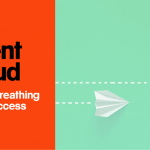Sarah Taylor, Transformation Manager at Sol-Tec
Spoiler alert. Just watched the last episode of the last season of GoT. The breaker-of-chains humanist known as the Mother of Dragons turned out to be just about the worst humanist imaginable by killing nearly all the humans in her all-consuming desire to help humanity. She got her comeuppance though, and that’s Snow joke. #onlyoneterriblepunIpromise
Somebody once compared my fondness for humanity to the Mother of Dragons’, luckily before she turned into a megalomaniac, so I took it as a compliment. When I sat down and penned an IT strategy, a little over 3 years ago, I whole-heartedly believed we should deliver a human-centric sustainable technology environment for our local authority so people could deliver, redesign or build better services.
Delivering this strategy, with the ethos “Connected Everywhere”, ambitiously relied on what were new platforms and tools at that stage, but I knew it was perfectly achievable technically. From the 2019 viewpoint, you won’t be surprised that our aims included moving away from local infrastructure, embracing Office 365, implementing Windows 10, adopting hosted open-architecture LOB applications, refreshing office WiFi and getting a decent data bundle for 4G connectivity on the go. Basically, lots of public cloud, a bit of private cloud and more than one way to connect to it: all with the intent that people delivering public services could use what they needed, whenever they needed it and wherever they were.
So now there was a plan for the tech, but what about the people? Got to love the people, particularly as technology, and information actually, is only useful in their hands. Preaching to the choir, I’m sure, however please humour me; at the simplest level, technology is a toolbox for humans and of course, proficiency with the tools varies for each human. In fact, some people don’t even want to open the toolbox (yeah, you thought of that person, didn’t you?) but that’s no longer a viable option in most organisations, so to embed effective IT that really makes a difference to staff, services and ultimately customers, you have to address levels of digital skill.
A local authority delivers a very diverse set of services, from collecting the bins to deciding planning applications along with a smattering of public health responsibilities and hundreds of other obligations. People who work for the Council are passionate about doing their best to deliver the thing they work on. Only the people at the top, and the backbone services (HR, Finance, ICT) give a monkey’s about consistency and opportunity across all services. Fair enough, right? But that makes it really challenging to deliver technology that is simple enough for all to use whilst sophisticated enough to deliver the specific and nuanced requirements for each team.
It’s not rocket science (or brain surgery which I maintain is more difficult than rocket science), but I theorise that in this kind of scenario, the best outcomes need good IT combined with reasonable digital skill. To judge how good your IT is, you would probably score it based on many factors such as configurability, functionality, availability, etc. Actually, it doesn’t matter how you score it so long as it’s scored consistently over time and throughout change. Digital skill can be judged as your aptitude to use that IT, your digital skill quotient as it were. Let’s express that as a simple equation. As you do.
IT (scored 1-10) x DSQ (where average DSQ is 100) = Opportunity
So opportunity increases with better technology and higher digital skill. Changed IT initially causes a drop in the DSQ value and therefore opportunity may not increase, or it may even decline.
Applying the equation goes like this.
Today: 4 x 100 = 400
Next year: 7 x 50 = 350
Bring in all the great technology tools you like, if you don’t tackle people’s ability to use them, you are slowing down how soon opportunities can be realised. Ability is increased by providing education, building confidence and giving people time to put it into practice, not just by telling people how to do something. I feel another equation coming on. OK, I’ll spare you this time.
We all know that IT doesn’t stand still. Until the new modern IT models of consistently evolving products such as Office 365 and Windows 10, there was no choice about replacing platforms, systems and devices because suppliers will stop supporting them, and user expectations do increase, and business requirements continue to evolve. Unless you are already in the cloud, your technology will change, whether it’s done enthusiastically or by being dragged kicking and screaming. Those lovely humans who will use that new tech need to raise their digital skill in response, so who’s responsibility is it to make that happen?
To answer that question, you need to make the decision or raise attention to it at the right decision making level. My answer to this challenge was to bid for money for people to help other people, right in the mix of calculating total cost of ownership from such varied elements as new licence costs, technical resource funding and savings from replacing expensive capital investment with subscription models (we more than halved our backup costs by moving to cloud). No matter though if the digital skills improvement is driven from HR or the Change team or somewhere else altogether, so long as it is driven.
Raising digital skill is a whole shedload easier when you implement the right technology. Experience has validated setting guiding principles about intuitive UI and exploiting out-of-the-box functionality without bespoke development and over-engineered complexity, and then sticking to them – because I’ve seen the failed delivery aka carnage when those lines are crossed. Wherever possible, adopt common well-used platforms that increase the chances of decent digital skill coming in with your new starters, and therefore raises your organisational DSQ without additional effort.
Hey there, IT people. IT is most awesome in the hands of humans, and to get on top of it, just like a dragon, people need a leg up.
P.S. The IT Strategy programme – delivered by technical experts and digital skill enablers – successfully included adoption of Office 365, remote desktop delivery of Windows 10 and moved legacy LOB applications to Azure to live out their final days. Bye bye on-premise infrastructure. Hello opportunity in the hands of the humans.





